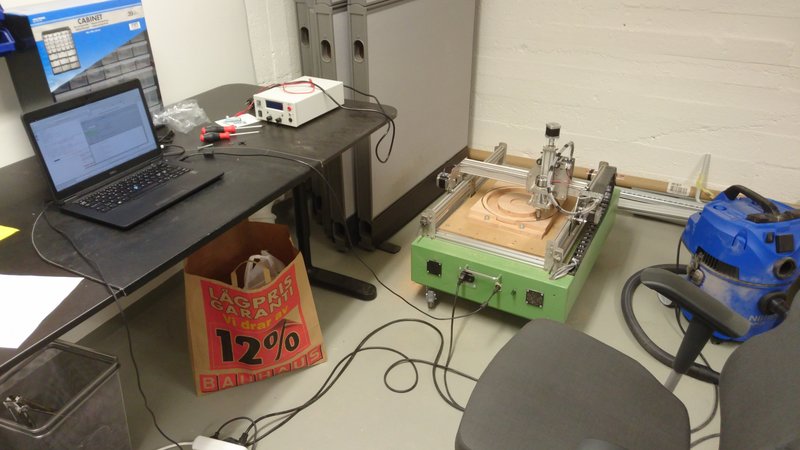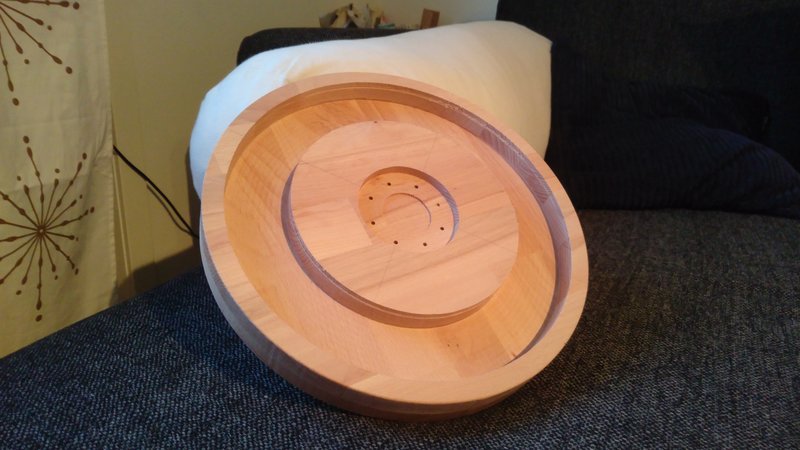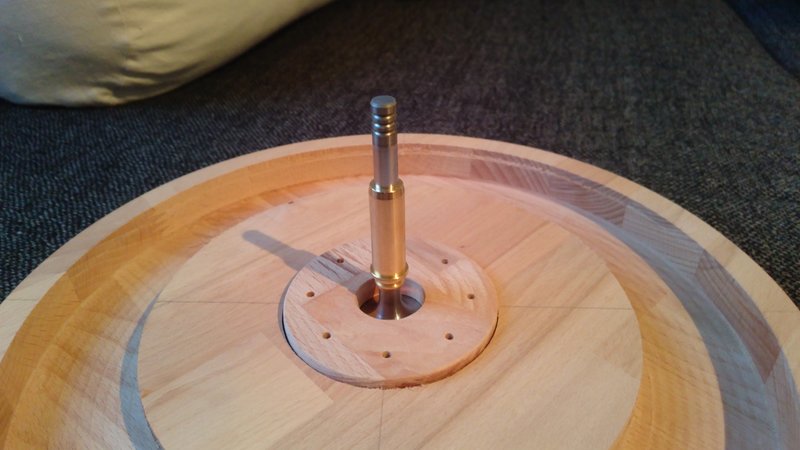Okay people, the turntable project has started for real now! I have manufactured the first parts using my CNC Router and sourced some parts for the platter bearing.

When I first started the turntable-project it was with the intention to use the CNC as much as possible. And since I really like woodworking in various form I decided to build the turntable most entirely in wood.
My turntable design consists of three separate parts. The rotating platter, the motor unit and the tonearm unit. The platter is beltdriven from the motor unit.

The bearing solution I have chosen for the platter is inspired by another diy turntable builder I found online.
The bearing design is using a regular inlet valve and guide from a car engine. The guide acts as an radial bearing and by standing the valve on a single ball bearing ball an axial bearing is achieved. This is a very economic solution since these car spare parts are very cheap.

The platter is made out of an 18 mm thick “glue joint board” in beech that I bought at the local wood store. I cut the board in half and glued it together to get a total thickness of 36 mm.
I took care to rotate the boards so that the grain direction is perpendicular to each other. In that way I am hoping to minimize any tendency of warping in the board.


Out of this double board I milled the turntable platter.


This big groove is to make room for the motor pulley and the belt. The belt will drive against the inner diameter of the groove.

I also made a locking washer to be able to clamp the intake valve to the bottom of the platter.

I did have to fiddle quite a lot with the feed and speed of the cnc until I got something that cut reasonably well. The problem is that the spindle motor is very weak. I choose this motor primarily for the reason that it should have a low sound level. However, it is still too loud to run in my apartment so in hindsight I should have gone for a higher power spindle in the first place.
In the end I did run this small 300W spindle at roughly max speed ~12000rpm, 1200 mm/min feed and 0.75 mm depth pass. Stepover was 65%.
The platter took roughly 3.5 hours to mill.
I have created all the gcode toolpaths for the platter and locking washer using my own tool pycnc. Its a simple gcode generator module that is written in Python. I will write a release announcement for this tool in the coming months. It will be released under an open source licence.
Here are the finished parts.




